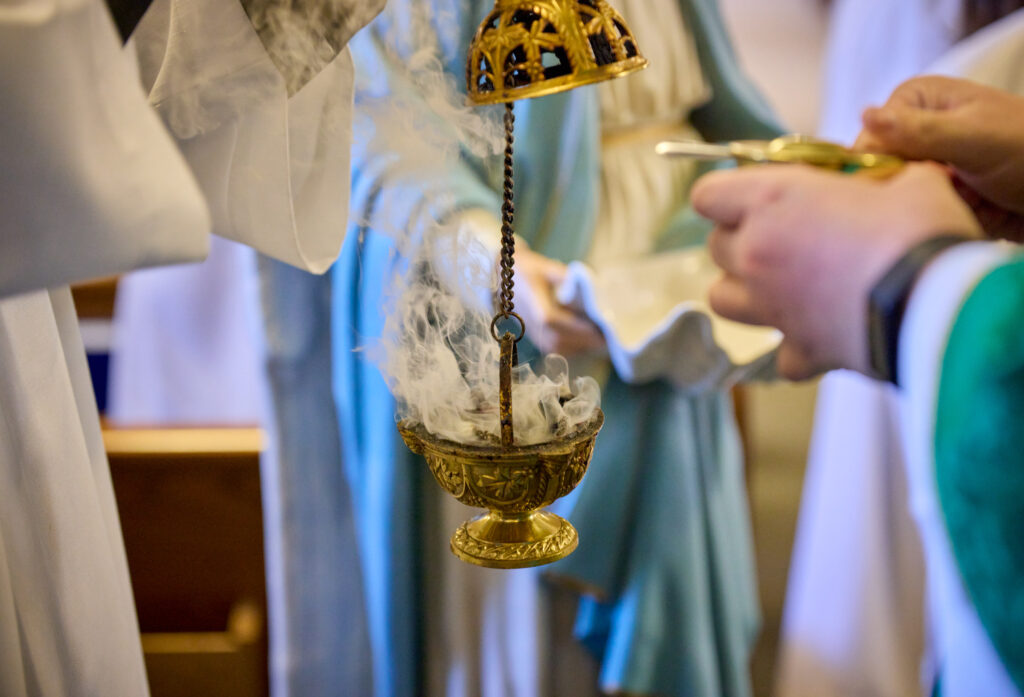Question: “Dear Maggie….Maybe if people understood the reason for incense, they would appreciate it more?” – Anonymous
Dear Anonymous….
Walk into St. Joseph Church (or even just the Family Center!) after any Sunday Mass or funeral, and you can’t help but notice that sweet-smelling haze that reveals, “Fr. Eric has been here!” And you can’t help but think, as the thurible (or censer) makes its way down the aisle, billowing with smoke: “Here we go again!”
Why so much incense? Why at every Mass? Isn’t that just meant for the “important” Masses like Easter or Christmas?
Incense is not something new, nor is it something Fr. Eric implemented just to keep us awake (and coughing) during Mass. Incense is actually an ancient symbol of purification and sanctification. In fact, we read in the Old Testament that our Lord gave Moses explicit instructions to use incense to purify the Tabernacle, where the Ark of the Covenant was held, making it a worthy place of worship.
You shall make an altar to burn incense upon; of acacia wood shall you make it . . . And Aaron shall burn fragrant incense on it; every morning when he dresses the lamps he shall burn it, and when Aaron sets up the lamps in the evening, he shall burn it, a perpetual incense before the Lord throughout your generations. –Exodus 30:1-10
This “holy smoke” also symbolizes the prayers of the faithful (you & me!) rising up to Heaven. How beautiful is that? At every Mass, Heaven meets earth! Incense also unites our prayers with the prayers of the Saints as we read in the Book of Revelation:
And another angel came and stood at the altar with a golden censer; and he was given much incense to mingle with the prayers of all the saints upon the golden altar before the throne; and the smoke of the incense rose with the prayers of the saints from the hand of the angel before God. – Revelation 8:3-4
In the General Instruction of the Roman Missal (the Church’s “guidebook” for liturgy), incense may be used during the entrance procession; to incense the altar; at the proclamation of the Gospel; during Offertory to incense the offerings, altar, priest and congregation; and during the Consecration. During a funeral Mass, the presider will also incense the coffin, both as a sign of prayer and as a sign of reverence for the deceased, who became a dwelling place of the Holy Spirit through baptism.
Let my prayer be set before you like incense, and the lifting up of my hands like an evening sacrifice! —Psalm 141:2
I hope this makes all that “smoke” a little clearer……
-Maggie

